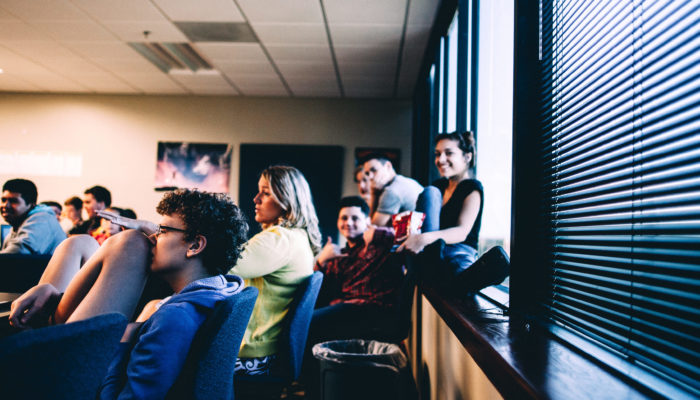
About a year ago I was sitting in a room at Summit Learning Summer Training for school leaders, preparing for a school year unlike any I had ever been a part of.
In six weeks, our Lead Innovation Studio in the Park Hill School District in Kansas City, Missouri, would open our doors to students at a brand new high school, with an instructional model vastly different from what any member of our team had ever implemented.
As a building principal, I faced many exciting aspects of this journey. One of the most daunting was building out a master schedule.
As I was discussing scheduling with other leaders, a veteran Summit Learning school administrator said she had developed more than 30 iterations of her master schedule in her first year. I was in awe of that number, and more than a little nervous about the prospect of that much change in a school year.
After our first year as a school, I can confirm we did experience a similar number of minor alterations and three complete master schedule overhauls.
What I didn’t realize until I went through it myself was that the process of developing our schedule was just as important as the finalized schedule.
Every school’s context is unique and presents its own challenges. No matter the number of schedule iterations you may ultimately implement, it is helpful to consider three guiding principles and a series of driving questions for decision-making when building a master schedule as a Summit Learning school.

Three Guiding Principles
1. Put Students First
Of course all the work we do in schools should have a student-driven approach. The structures of a Summit Learning school require a non-traditional approach, so make sure you have student interests at the center of every decision you make when constructing the schedule.
In our specific context, we our students share music program instruction and classrooms with our sister schools. Our first schedule was focused too heavily on our building’s schedule and did not coordinate well enough with our other building’s schedules, creating challenges for our shared students. Our first major schedule overhaul addressed that issue.
2. Practice Patience and Flexibility
Exercise patience with yourself and give yourself license to iterate. Scheduling for the Summit Learning components will likely look different than any schedule process you have been a part of. It will take time to figure out what works for your context.
When we completely reworked our master schedule, it created tremendous stress for students and staff. In the end, we knew that it was needed to best serve our students. This experience also modeled our faculty’s growth mindset — one Habit of Success, the set of 16 mindsets and behaviors that support academic achievement and well-being.
3. Be Innovative
Challenge your building or school to do things differently than they have been done before. You are asking your teachers to facilitate learning in a non-traditional way, so the flow of the day will necessarily be non-traditional.The Summit Learning approach not only allows for a different take on scheduling, it demands it.
Self-Direction and ongoing, structured Mentoring was not a part of what anyone in our building had ever experienced. Figuring out how to make that work required trial and error and thinking differently about how our day was structured. This was the area we sought the most guidance and advice on from other Summit Learning school leaders when we were heading into the year, and what we have adjusted the most.
These principles are all bound together — you must be patient with the process as you innovate. Since traditional scheduling is not always student-centered, you will need to do things differently to have that be the true driver of your schedule.

Five Questions to Drive Your Schedule Build-Out
In addition to three guiding principles, it is helpful to consider a series of questions as you work to build out your schedule. You can use these questions to hold discussions with your stakeholders and decision makers around the priorities of your school.
We worked on setting priorities as staff, sought input from our students and families, connected with our district schools, and district leadership to help in answering these questions.
A starting list of questions to consider follows. Summit Learning also has a very helpful set of criteria to help you in this process.
1. What Are Your Major Drivers?
These are the infrastructure and curriculum elements that must be accounted for in your schedule. What are your facility limitations? Will students spend part or all of their day in Summit Learning? What are your major programmatic considerations, such as music and other electives that must be accounted for?
2. How and When Will You Mentor?
Each student at Lead Innovation Studio receives a minimum of 10 minutes of mentoring weekly. 10 minutes a week adds up when you have a group of mentees. We found it hard to find that much time, especially when sharing students. We ultimately combined our students’ reserved time for self-directed learning with mentoring time. Students meet in a small group with their fellow mentees and mentor each day to ensure there is ample opportunity to mentor — this must be a priority in your scheduling.
3. How Will You Facilitate Self-Direction?
We took multiple approaches to Self-Direction over the course of the first year and will try a slightly different approach in Year Two.
In our context, we realized that we wanted to offer this both as time when the whole building was in self-directed learning time concurrently, and offer chunks of time where only small groups of students were practicing Self-Direction while others were working on Projects. This will give us increased flexibility in scheduling versus having the whole building practicing Self-Direction at the same time, as we did in Year One.
4. How Will You Structure Summit Reads and Summit Solves?
Summit Reads is a time of day when all students engage in reading, build their love of reading, and practice reading strategies in order to grow as a reader. Similarly, Summit Solves is a time of day when all students are developing procedural fluency in mathematics, as well as a place for developing problem solving skills for those with fewer needs on procedural fluency.
This intervention time is critical to the success of our students. To have this time used effectively, I found we needed to put it at the center of how we built out our schedule. We will be creating blocks of time in the schedule where we have a team of math and reading experts to provide tiered and targeted interventions to reach every student where they’re at in their development of both skills. To provide that level of support, it needed to be a priority in the scheduling.
5. How Will You Create Collaboration Opportunities for Staff?
Teachers new to this model will need opportunities to collaborate. Supporting that work and teachers as they shift their practice is critical. How you structure that, and your ability as a leader to support that work must be planned for.
For us, that means planning collaboration times by content area. It also means a structured approach to the conversations we have in our scheduled after-school collaboration times.

Use Your Schedule to Model Your Values
The master schedule (like the Summit Learning Platform) is a tool to support learning. It is an opportunity to send a message to all stakeholders that learning as a Summit Learning school will be different, and to signal exactly what your priorities are.
Rather than being a shortcoming, the process of flexibly improving on the schedule throughout the school year to find the best possible version models the value of an iterative process for your school community.
The schedule is not just a logistical undertaking, it is a very visible display of the values and priorities of your building or school. It is one that will provide tremendous return on the time invested into its development. Good luck and enjoy the ride!
Did you find this principal’s advice valuable? Read 10 more tips for implementing Summit Learning at your school on the Summit Learning blog.

